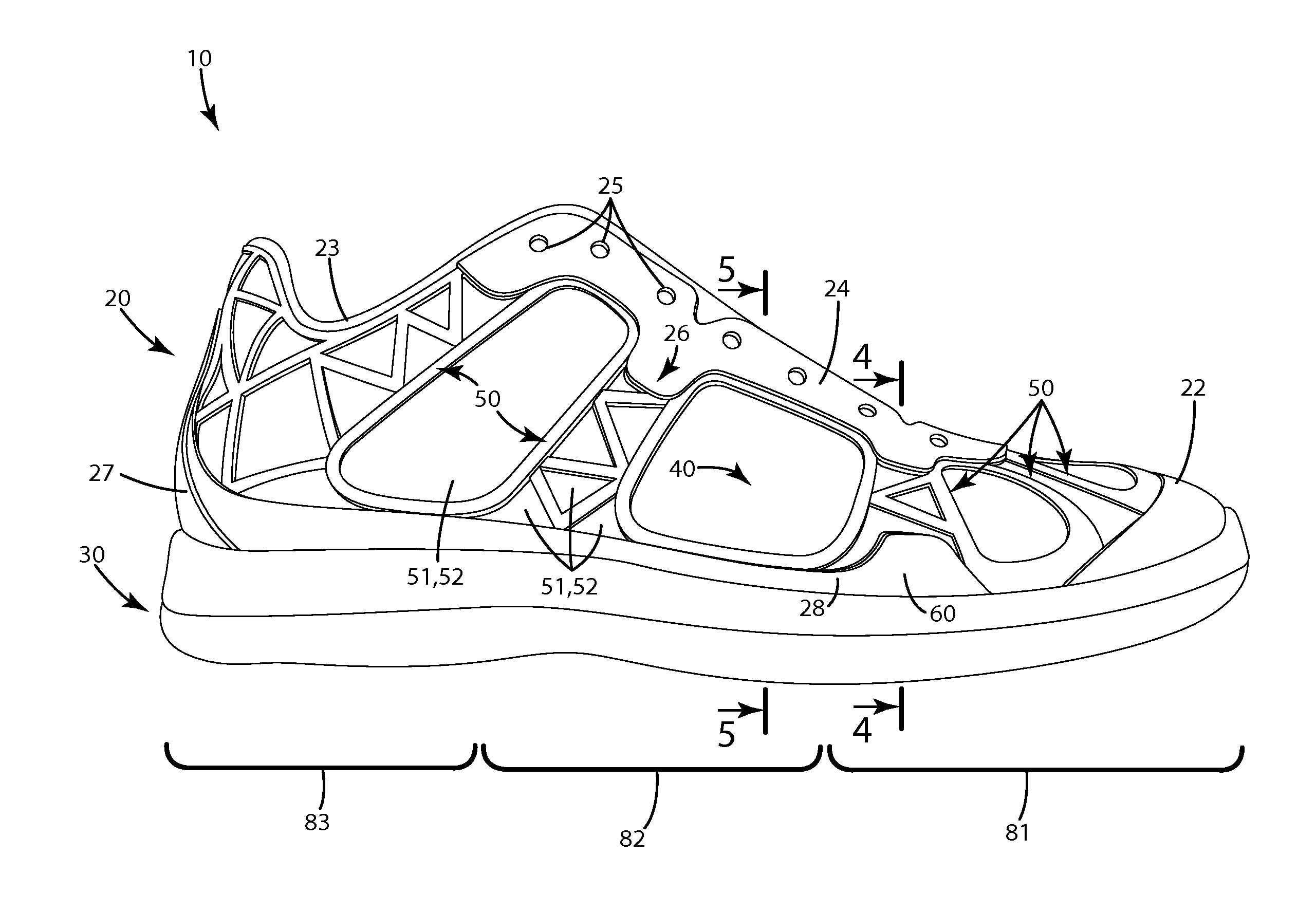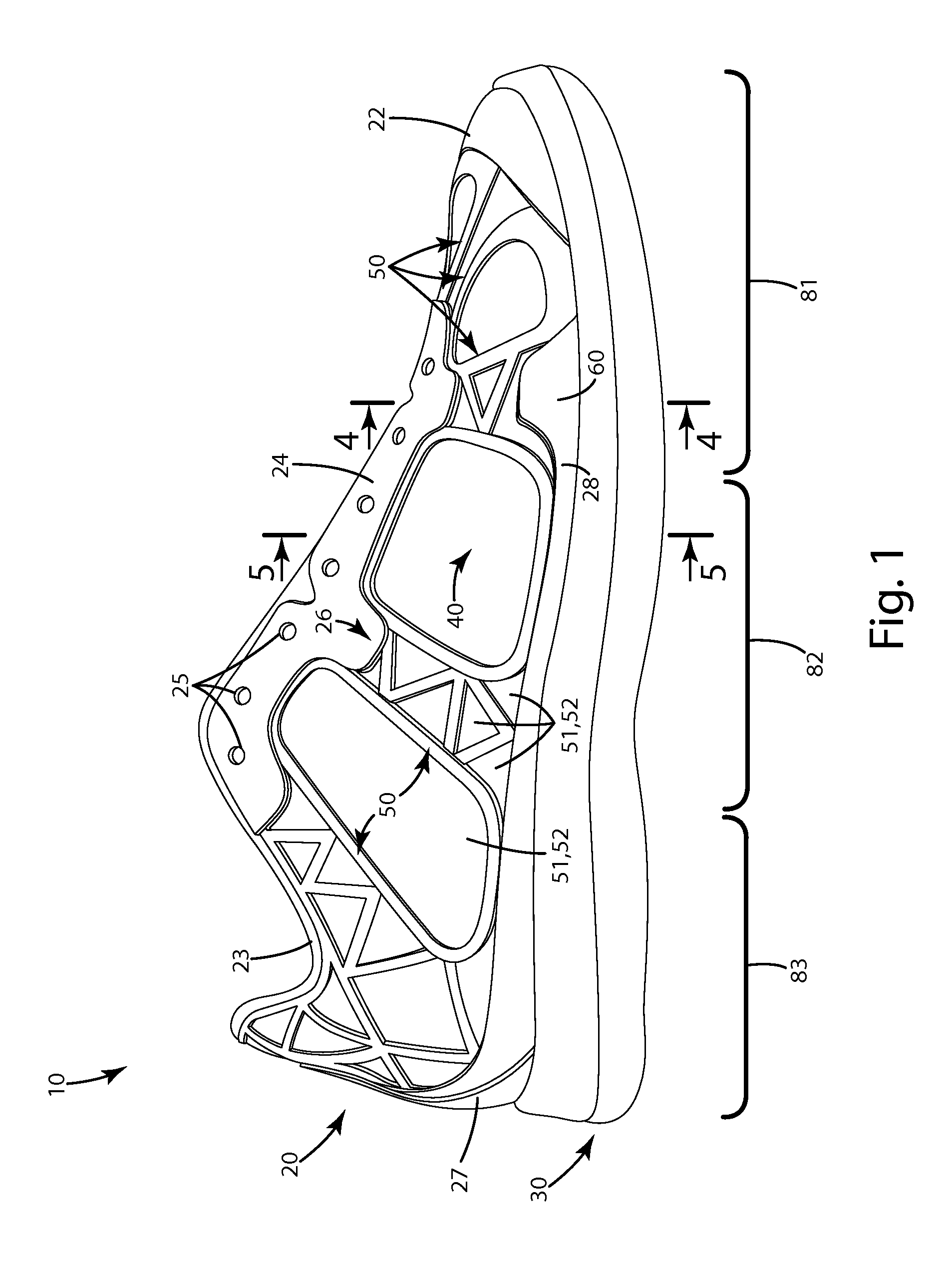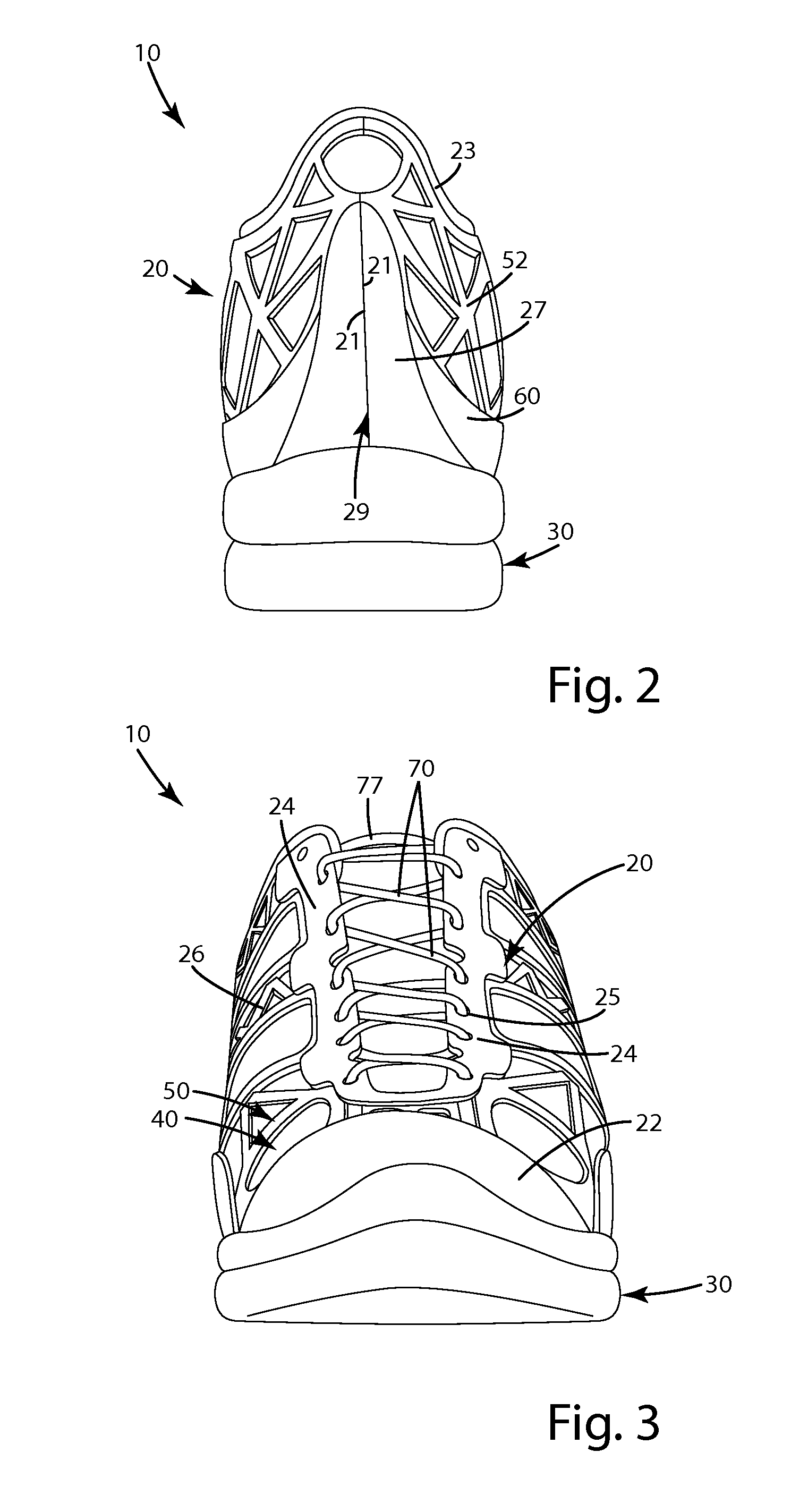Footwear and related method of manufacture
a manufacturing method and technology for footwear, applied in the field of footwear, can solve the problems of affecting the manufacture and assembly of footwear for centuries, requiring substantial labor input on multiple levels, and assembling footwear is a labor intensive process, so as to achieve the effect of saving significant assembly and processing time and labor costs, facilitating sealing footwear, and reducing pattern retooling costs and tim
- Summary
- Abstract
- Description
- Claims
- Application Information
AI Technical Summary
Benefits of technology
Problems solved by technology
Method used
Image
Examples
first alternative embodiment
IV. First Alternative Embodiment
[0082]A first alternative embodiment of the footwear and related method of manufacture is illustrated in FIG. 13. This embodiment relates primarily to the construction of the exoskeleton and is similar to the embodiment described above with several exceptions. For example, the exoskeleton 150 is joined with the base material 40 / sheet 42 in such a manner that the heel element 123 is completely surrounded by the exoskeleton 150. In contrast, the exoskeleton adjacent the toe box 122 defines a gap 122 that separates the marginal ends 121 of the exoskeleton 150 in a region corresponding to a toe box. With this construction, the seam that closes the finished upper, after the base material 140 / sheet 142 and exoskeleton 150 are placed on the last, is located within the toe box 122 of the finished construction. Accordingly, this type of footwear differs from the current embodiment above in that the seam that substantially closes the upper is at the front of th...
second alternative embodiment
V. Second Alternative Embodiment
[0084]A second alternative embodiment of a method of manufacturing the footwear is illustrated in FIG. 14. The footwear and method of this embodiment are similar to the above embodiments with several exceptions. For example, when the exoskeleton 250 is molded, multiple dowel holes 258 are formed along a lower peripheral allowance 229 of the exoskeleton 250, or upper in general. When the exoskeleton 250 and the base material 240 / sheet 242 are placed on the last 109 as shown in FIG. 15, the lower portion of the exoskeleton can be held in place by dowels 211 associated with the last 109 where the dowels project at least partially into and / or through the holes 258. In this manner, the exoskeleton 250 and base material 240 / sheet 242 and more generally the three-dimensional upper 220, can be held in a fixed position relative to the last. While in this fixed position, an outsole mold 207 can be brought into proximity to the last 209 to mold a sole component,...
third alternative embodiment
VI. Third Alternative Embodiment
[0085]A third alternative embodiment of a method of manufacturing the footwear is illustrated in FIG. 16. The footwear and method of this embodiment are similar to the above embodiments with several exceptions. For example, the exoskeleton 350 can be molded to the sheet 342 while the sheet is contoured and / or conformed to a three-dimensional form on a last 309.
[0086]In general, a flat sheet 342 of base material 340, such as that described in the embodiments above, is provided. The flat sheet 342 is reconfigured and conformed to the three-dimensional contours of the last 309. A mold 307 is placed adjacent the three-dimensional contours of the last, with the base material 340 / base sheet 342 located between the last and the mold. The mold 307 defines mold cavities 350C that correspond to the locations in which the exoskeleton 350 is desired to be formed on the base material 340 / base sheet 342. A polymeric material 350A is injected at a molding pressure i...
PUM
| Property | Measurement | Unit |
|---|---|---|
| Area | aaaaa | aaaaa |
| Flexibility | aaaaa | aaaaa |
Abstract
Description
Claims
Application Information
 Login to View More
Login to View More - R&D
- Intellectual Property
- Life Sciences
- Materials
- Tech Scout
- Unparalleled Data Quality
- Higher Quality Content
- 60% Fewer Hallucinations
Browse by: Latest US Patents, China's latest patents, Technical Efficacy Thesaurus, Application Domain, Technology Topic, Popular Technical Reports.
© 2025 PatSnap. All rights reserved.Legal|Privacy policy|Modern Slavery Act Transparency Statement|Sitemap|About US| Contact US: help@patsnap.com



